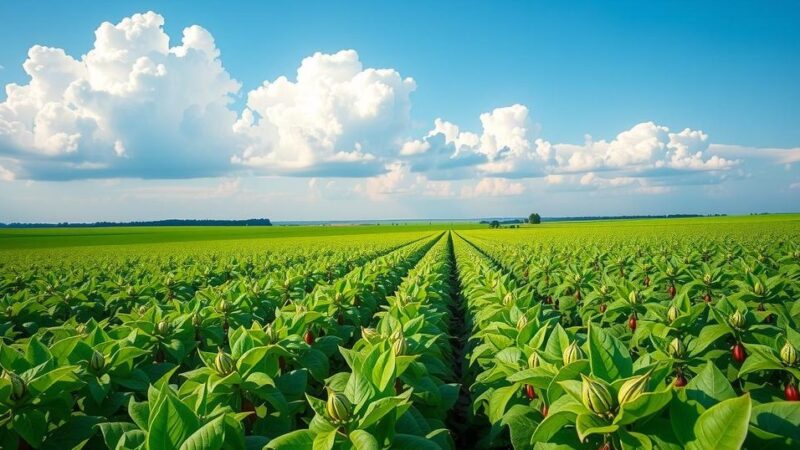South Africa’s economy grew only 0.6% in 2024, marking the lowest expansion in four years due to logistical issues, droughts, and weak consumer spending. The rand showed resilience, and focus is shifting towards the upcoming budget plan. While some sectors recorded growth, agriculture and trade struggled. The outlook for 2025 is cautiously optimistic, although challenges like unemployment remain critical.
In 2024, South Africa’s economy experienced its lowest growth in four years, recording an expansion rate of a mere 0.6%. Factors contributing to this slowdown include logistical issues, reduced consumer spending, ongoing drought conditions, and a decline in fixed investments. Despite these economic challenges, the rand strengthened slightly, trading at 18.5210 against the dollar, signaling some resilience in the currency market.
The upcoming budget plan from Finance Minister Enoch Godongwana on March 12 is being closely monitored by investors, especially after a previous suggestion to increase value-added tax was rejected in an effort to raise 191 billion rand over three years. Within the economy, only three of ten sectors showed positive contributions to growth: finance, personal services, and electricity, with growth rates of 3.5%, 1.7%, and 3.5%, respectively. Notably, Eskom Holdings SOC Ltd. improved its operations, significantly aiding the electricity sector’s performance.
On the contrary, agriculture and trade sectors registered declines of 8% and 1.4%, respectively, while gross fixed capital formation fell by 3.7%, marking its worst outcome since the pandemic. Conversely, the growth outlook for 2025 appears more favorable, with anticipated consumption-led growth driven by increased demand and reforms in energy and rail sectors. Accelerated growth potential arises from possibilities in industrial activity and fresh investments.
During the final quarter of 2024, improvements were seen in various sectors, including a notable 17.2% growth in agriculture and a 1.1% rise in finance. Household consumption expenditure also increased by 1%, which contributed to the overall 0.6% GDP growth observed in the last quarter. However, despite these positive indicators, the projected 1.7% growth for 2025 may still fall short of adequately addressing high rates of unemployment and poverty, remaining below the coalition government’s targeted growth rate of 3%.
To effectively tackle these socio-economic challenges, South Africa will require a comprehensive and robust economic strategy, particularly in the aftermath of the 2024 elections. The emphasis must be placed on formulating actionable plans that go beyond mere growth figures to ensure sustainable development and improvement in living standards for its citizens.
In summary, South Africa’s economic growth for 2024 reached a low of 0.6%, primarily due to various factors including weak consumer spending and adverse climate conditions. While the rand exhibited some strength and certain sectors showed positive growth, significant challenges persist. The government’s upcoming budget and anticipated reforms may set the stage for recovery, although projections indicate a continued struggle with unemployment and poverty, necessitating a stronger economic strategy post-election.
Original Source: www.indexbox.io






